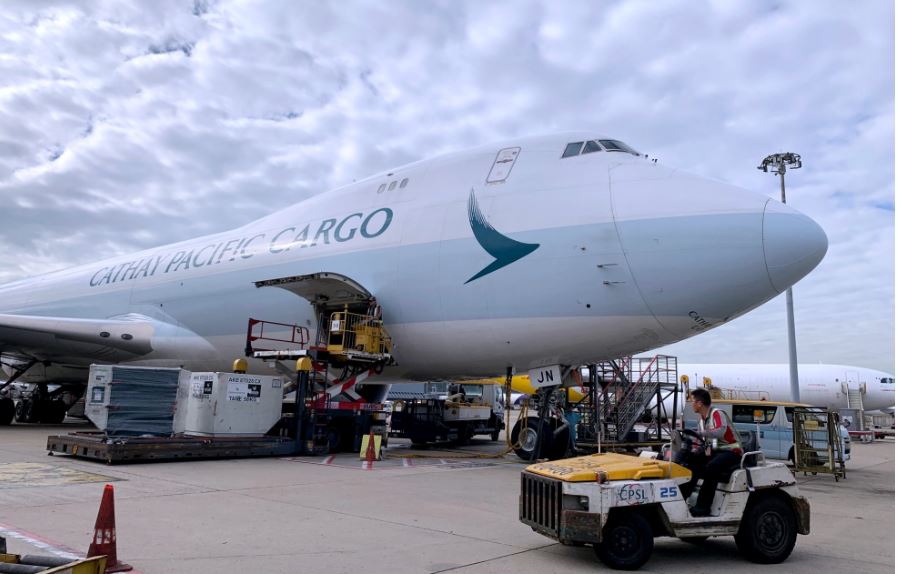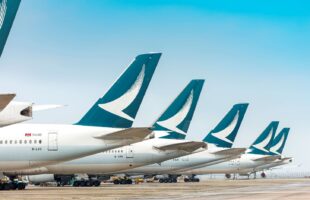
Courtesy of Cathay Pacific

Cathay Pacific Group reported HK$9.9 billion (US$1.3 billion) in net loss for the first six months as the carrier felt the impact of Covid-19, with group chairman Patrick Healy describing the half-year period as the most challenging in its 70-year history.
Net loss from Cathay Pacific and its Cathay Dragon unit amounted to HK$7.36 billion (US$950 million) in the first half, and the share of losses from other subsidiaries and associates was at HK$2.5 billion (US$320 million). Only its all-cargo units Air Hong Kong and Air China Cargo recorded profits during the first six months of the year.
The airline said that the first-half loss already factored in the HK$1.1 billion (US$142 million) in government grants for COVID-19 relief, as well as impairment charges of HK$2.47 billion (US$319 million) related to 16 aircraft unlikely to re-enter meaningful economic service again.
Meanwhile, operating expenses waned 33.5 percent year on year to HK$33.9 billion (US$4.4 billion), whilst total group expenditure stood at HK$35.6 billion (US$.6 billion), down 32 percent from the same period last year. Operating loss was recorded at HK$8.8 billion (US$1.14 billion). The airline said it was losing cash at a rate of HK$2.5 billion (US$320 million) to HK$3 billion (US$387 million) per month from February to April as it serviced customer refunds.
Passenger revenue plummeted 72.2 percent to HK$10.4 billion (US$1.34 billion) in the first two quarters, as Cathay Pacific and Cathay Dragon saw passenger traffic stumble 76 percent to only 4.4 million in the first six months, down from 18.3 million a year earlier.
With extensive cuts to its passenger schedule, cargo capacity dropped 31 percent, whilst overall tonnage carried slid by 31.9 percent to 667,000 tonnes for the first half.
Cathay Pacific said there was an imbalance between capacity and demand in the cargo market, which led to higher cargo revenues compared to the first half of 2019.
Cargo operations saw strong demand as revenue climbed 8.8 percent to HK$11.2 billion (US$1.45 billion). Meanwhile, load factor jumped 5.9 percentage points to 69.3%.
To meet heightened demand amidst global reduction in air cargo capacity, Cathay Pacific said it sourced additional capacity from subsidiary Air Hong Kong and mounted additional freighter services. The carrier operated 2,243 pairs of cargo-only passenger flights throughout the first half of the year, 2,228 of which flew between March and June.
From 23 April, Cathay Pacific began carrying cargo in passenger cabins aboard Boeing 777-300ER passenger flights after obtaining special approval from the Hong Kong Civil Aviation Department, adding another 5 to 9 percent of cargo-carrying capacity on each aircraft.
As of end-June, a regular schedule of cargo-only passenger flights to 51 major destinations had been reinstated, the airline noted.
Days before the announcement of the half-year results, Cathay Pacific reinstated the cargo director position with Tom Owen, former director for people, taking the new role. Nelson Chin, meanwhile, rotated to regional general manager for north-east Asia, as George Edmunds, who was head of revenue management operations for the passenger division, stepped in as general manager for commercial cargo.







